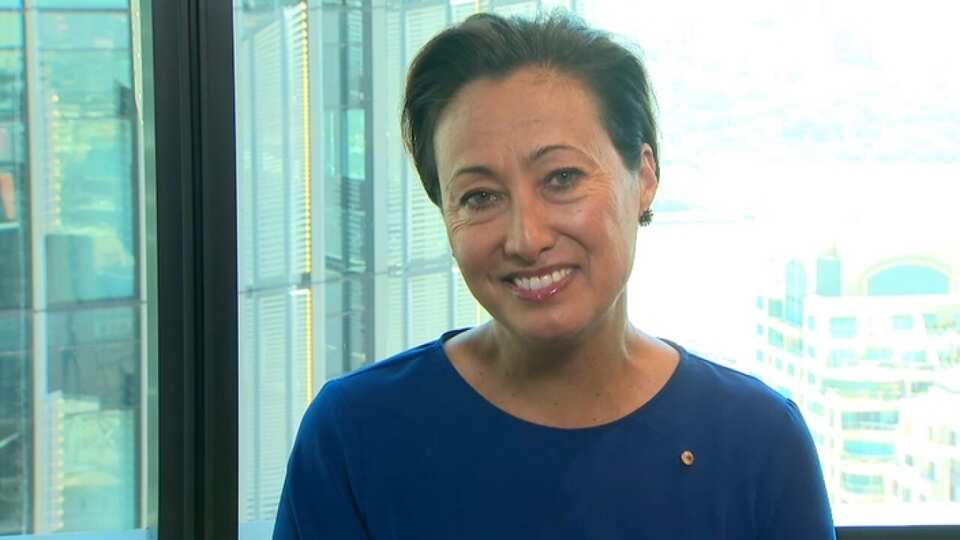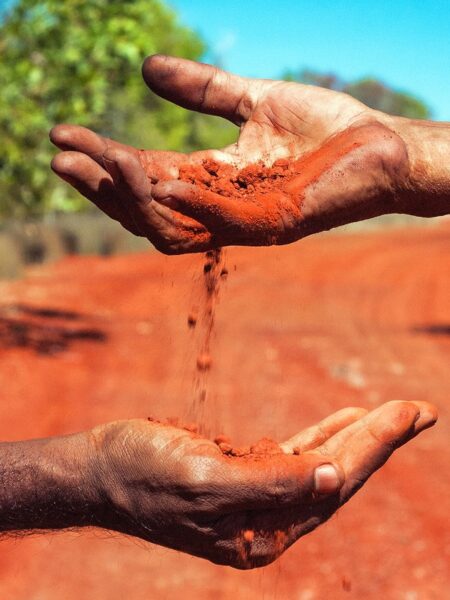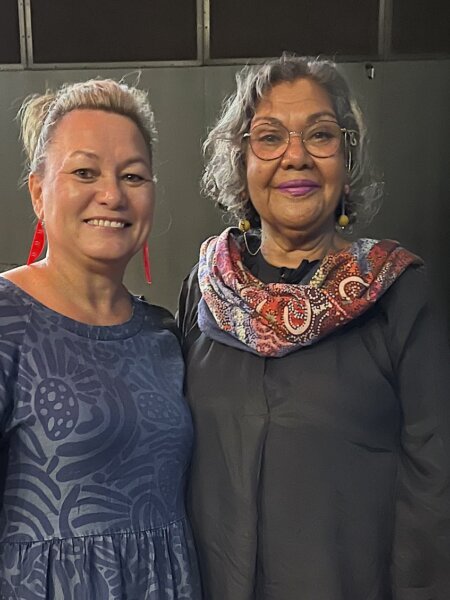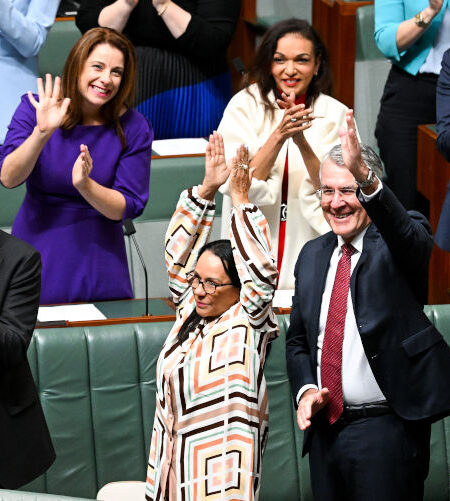Priorities for reconciliation
I am speaking tonight as the co-chair, together with Fred Chaney, of Reconciliation Australia, which is the independent, non-profit organisation established to provide and encourage an ongoing national focus for the reconciliation process, following the end of the Council for Aboriginal Reconciliation. The Council stressed that the work of reconciliation must continue, and established Reconciliation Australia to provide a continuing national focus for the process, working with the various components of the people’s movement at State, Territory and local levels.
The Board of Reconciliation Australia has identified three key priorities for its work over the coming period:
- Ensure that the social and economic disadvantage of Indigenous peoples is fully addressed;
- Facilitate public discussion on the rights of Aboriginal and Torres Strait Islander peoples, and the issue of a treaty and or/agreements; and
- Work cooperatively with all parts of the people’s movement to develop partnerships and projects which deliver tangible reconciliation outcomes.
The first point recognises that reconciliation will not be achieved until we fully address the issue of social and economic disadvantage. It does not diminish the significance of symbols and commitments, such as last year’s walks, to say that true reconciliation will become a reality only when it delivers tangible outcomes for Aboriginal and Torres Strait Islander peoples.
The third point recognises that, as always, Australia’s journey towards true reconciliation lies in the hands of the people, and all the community organisations, peak bodies and governments which represent them and are responsible to them.
And the second point is what we’re discussing here tonight: the need for a treaty, settlement or agreement which honestly acknowledges the past, recognises the legacies of the past in the present – our unfinished business – and establishes a framework for a shared future.
Before talking in more detail about Reconciliation Australia’s approach to this issue, I would like to briefly cover some background to the current discussion about a treaty or agreement.
The background
During the whole process of British colonisation and settlement which dispossessed Aboriginal and Torres Strait Islander peoples from their lands, not once did Britain or the colonial authorities conclude a formal treaty or agreement with the original inhabitants. Australia is the only Commonwealth country that never signed an official treaty with Indigenous peoples.
In the first part of the 19th century, various eminent people in the colonies in Sydney, Hobart, Perth and Adelaide argued that, for example, treaties should be entered into with Aboriginal people and that their rights to land should be respected. Such arguments were ignored, and Aboriginal and Torres Strait Islander people were never formally recognised as the original inhabitants of this continent.
Yet Indigenous peoples never gave up their own yearnings for recognition, rights and justice. In 1963, the Yolngu people of Arnhem Land presented Federal Parliament with their Bark Petition in protest at a government decision to grant leases for bauxite mining on land excised from their reserve. In 1972, the Larrakia people of the Darwin area requested treaties. In the late 1970s, and again in the late 1980s, attempts were made both by independent committees and at Government level to initiate moves towards a treaty, agreement or compact which could represent a formal settlement of the unresolved issues of our past – to put to rest the past not yet dealt with so that we could all move forward together into a better future.
For example, in June 1988 the Chairmen of the Central and Northern Land Councils, Wenten Rubuntja and Galarrwuy Yunupingu, presented the then Prime Minister, Bob Hawke, with the Barunga Statement. This called for Aboriginal self-management, a national system of land rights, compensation for loss of lands, respect for Aboriginal identity, an end to discrimination, and the granting of full civil, economic, social, political and cultural rights. The statement also called on the Commonwealth Parliament:
to negotiate with us a Treaty or Compact recognising our prior ownership, continued occupation and sovereignty, and affirming our human rights and freedoms.
In response, the Prime Minister and the then Minister for Aboriginal Affairs, Gerry Hand, signed a five-point statement which included:
- The Government affirms that it is committed to work for a negotiated Treaty with Aboriginal people.
- The Government sees the next step as Aborigines deciding what they believe should be in the Treaty.
Unfortunately, Australia was not ready for such a formal settlement at those times, and broad agreement could not be reached, either in Parliament, the wider community, or among Aboriginal and Torres Strait Islander peoples.
However, in 1991 the Commonwealth Parliament showed vision, leadership and unity when it voted unanimously to establish the Council for Aboriginal Reconciliation and a formal process of reconciliation to take place over the decade leading up to the centenary of Federation in 2001. The Parliament noted that there had been no formal process of reconciliation to date, and that it was ‘most desirable that there be such a reconciliation’ by the Centenary of Federation.
Although the hope of achieving true and lasting reconciliation by 2001 – and a formal settlement – was not achieved, the ‘decade of reconciliation’ witnessed some truly remarkable achievements. The most visible were those walks for reconciliation but we should remember that they were the final result of the efforts of many thousands of Australians who have worked long and hard to make reconciliation a reality in their communities, workplaces and organisations.
Australians from Aboriginal, Torres Strait Islander and wider communities not only walked together over all those bridges, they also worked together on many projects – big, small and in between – to achieve real change and definite reconciliation outcomes.
The outcomes of the formal reconciliation process are set out in three key publications of the Council for Aboriginal Reconciliation. Two of them are the reconciliation documents handed to the nation’s leaders and all Australians at Corroboree 2000 last May. They are:
These documents were finalised after one of the most extensive and inclusive processes of public consultation on such an important matter of public policy.
The third publication is the Council’s final report, aptly titled Reconciliation: Australia’s Challenge. This outlines the work of the Council and many other Australians during the reconciliation decade, and sets out the Council’s conclusions and final recommendations to the Parliament.
These documents provide a summary of what has been achieved so far, a record of commitments made by governments and organisations to continue the work of reconciliation, and an outline of the things which remain to be done towards the goal of true reconciliation.
As I said earlier, the challenge now is to build on the foundations provided by the all these outcomes so far and to make the changes necessary for Australians to be able to say with truth and pride that we have achieved true and meaningful reconciliation.
A formal settlement
In its final report, the Council made six recommendations to the Prime Minister and Parliament, further to the documents which it handed to the nation at Corroboree 2000.
Recommendation 5 said that each government and parliament:
recognise that this land and its waters were settled as colonies without treaty or consent and that to advance reconciliation it would be most desirable if there were agreements or treaties; and
negotiate a process through which this might be achieved that protects the political, legal, cultural and economic position of Aboriginal and Torres Strait Islander peoples.
Recommendation 6 said:
that the Commonwealth Parliament enact legislation (for which the Council has provided a draft in this report) to put in place a process which will unite all Australians by way of an agreement, or treaty, through which unresolved issues of reconciliation can be resolved.
In considering its response to the Council’s recommendations, Reconciliation Australia has identified constructive public discussion on all aspects of the Indigenous rights agenda and the approach to a treaty and/or agreements as one of its three key priorities, as I said earlier.
A formal settlement of the legacies left to this nation by over 200 years of British colonization and dispossession is essential so that all of us can resolve the ‘unfinished business’ and move forward together.
However, if a framework agreement or treaty to settle the unfinished business of reconciliation is to be negotiated and finalised, it will require the widespread support and efforts of a great many Australians. To date there has only been a very limited examination and objective debate in the wider Australian community regarding these issues.
Reconciliation Australia welcomes ATSIC’s initiative in launching a nation-wide consultation of Indigenous peoples to seek their views about a possible treaty between Aboriginal and Torres Strait Islander peoples and the nation as a whole.
Reconciliation Australia supports broad community discussion about these issues – first and foremost, by Indigenous peoples who need to determine our own views.
The wider Australian community should respect the right of Indigenous peoples to determine their own views on this issue free from interference. However, it is important that the wider community should also hold a constructive and informed discussion about these issues – it should not simply wait passively to see what Aboriginal and Torres Strait Islander peoples say before discussing what other Australians think.
The issues involved in a formal settlement of the relations between Indigenous peoples and the wider community will not go away if we just ignore them. It is far better to deal with them as a community and with goodwill than to sweep them under the carpet.
Reconciliation Australia will be raising the need for informed discussion on these issues with governments and other key stakeholders and bodies in the wider community. We are prepared to work with all interested bodies to help facilitate an open, informed and constructive discussion about a possible agreement, settlement or treaty.
In the first instance, we are seeking a response from governments, oppositions and other parliamentary political parties in relation to Recommendations 5 and 6 of the Council’s final report, dealing with agreements or treaties.
Without seeking to pre-empt the outcomes of the ATSIC process, Reconciliation Australia will encourage objective and informed discussion and debate within the wider community about the potential benefits, form and content of any agreement or treaty.
To that end, Reconciliation Australia is proposing to work in partnership with key institutions and bodies, including governments and ATSIC, to convene a series of forums to critically and objectively examine the issues relating to an agreement or treaty as a means of progressing reconciliation.
Finally, I’d just like to comment on one of the difficulties we’re going to encounter here, and that’s the word treaty itself. Those who oppose any formal settlement or even a framework agreement to set in place a process for negotiating one have used and will use scare tactics to create obstacles and diversions. One of these relates to the word ‘treaty’ and the claim that a treaty implies two nations within one. Those of us who support a formal settlement – whether called a treaty, agreement, compact, or whatever – should be ready to argue the substance of the issue and to counter such scare tactics.
The substance is the need for a formal settlement which acknowledges the facts of history and the wrongs of the past, recognises the rights of Aboriginal and Torres Strait Islander peoples, and provides a framework for a shared future which both sides mutually agree on, without duress.
The issue of the precise form and content of such a settlement will be determined by the public discussion in the months ahead: in the first place, by the views of Indigenous people which will be expressed in the process currently being organised by ATSIC. The name of any such settlement will also be a matter for such public discussion.
As to the term treaty, I liked the way Mick Dodson put it in a television forum just after Corroboree 2000. He pointed out that there was nothing anybody should fear in the concept of a treaty, as by its very nature it was something which both sides would have to agree to, and each party would have a veto over. As he put it: ‘If the blackfellas don’t like what’s in it they won’t agree to it, and if the whitefellas don’t like it they won’t agree.’
And we could add: if we both like it, we’ll both agree.
Read the complete Treaty Talks given at the ESORA and NAIDOC Week Forums Treaty! Let’s Get It Right!




